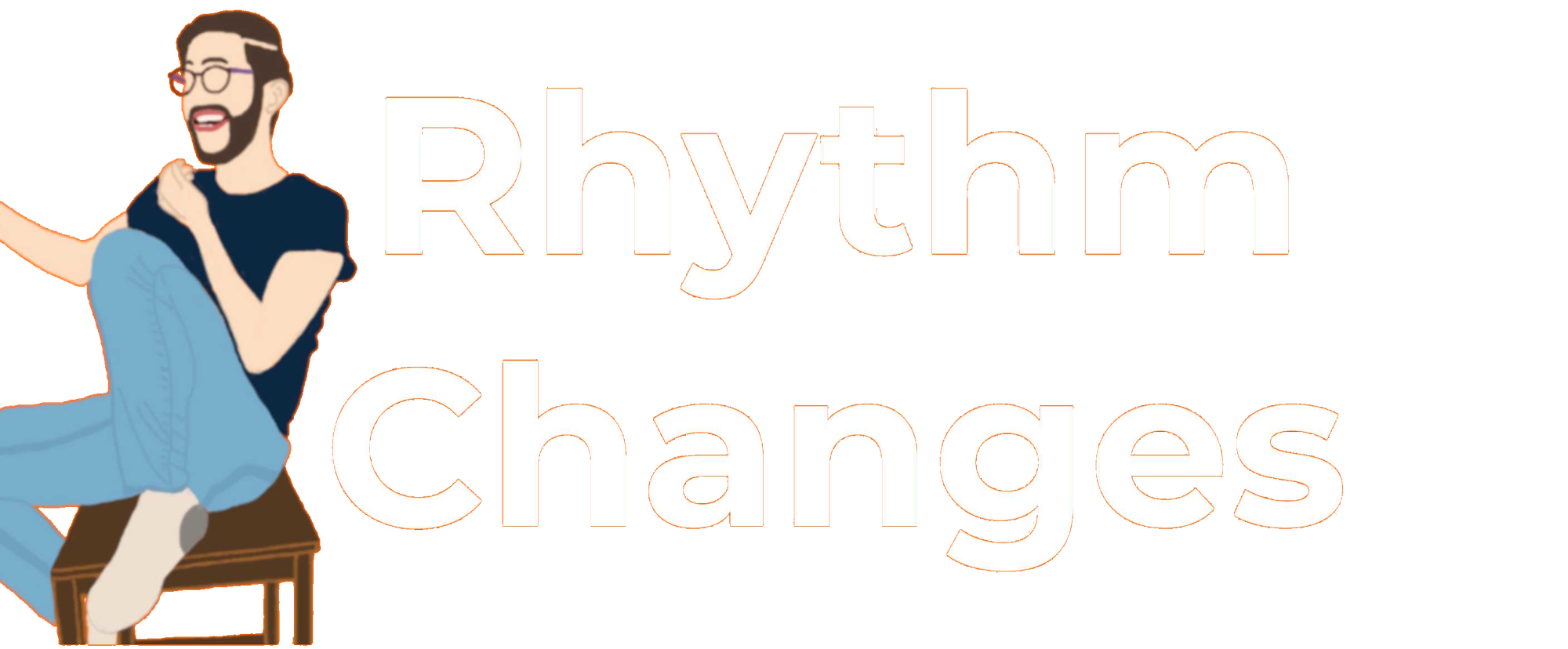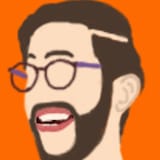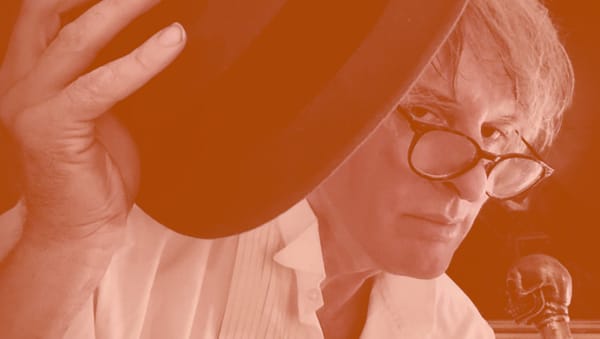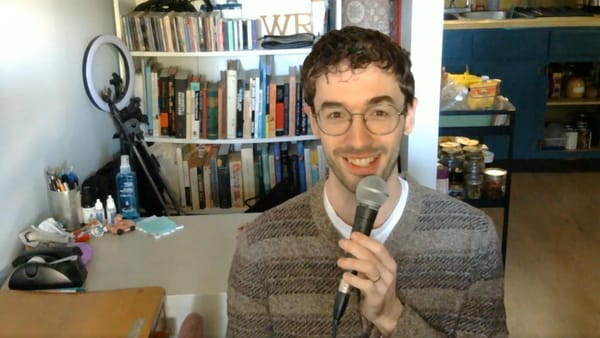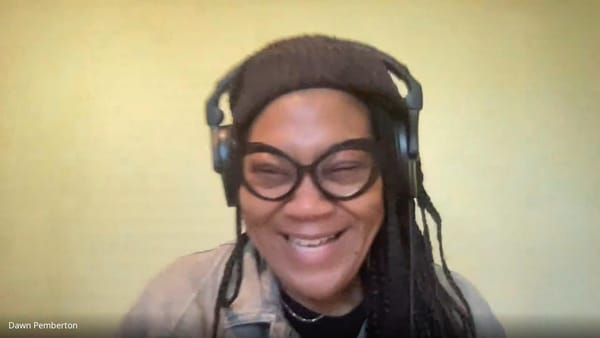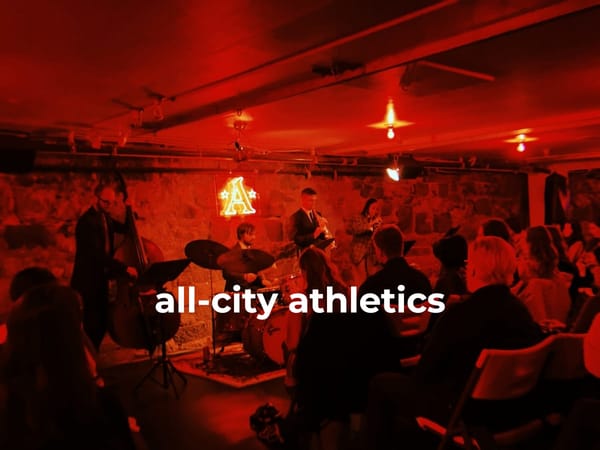An interview with Steve Holt on the Jazz Impact Quintet
The veteran pianist on his new album and quintet, dropping “O Canada”, “The Cup Bearers”, Larry Coryell, and James Moody
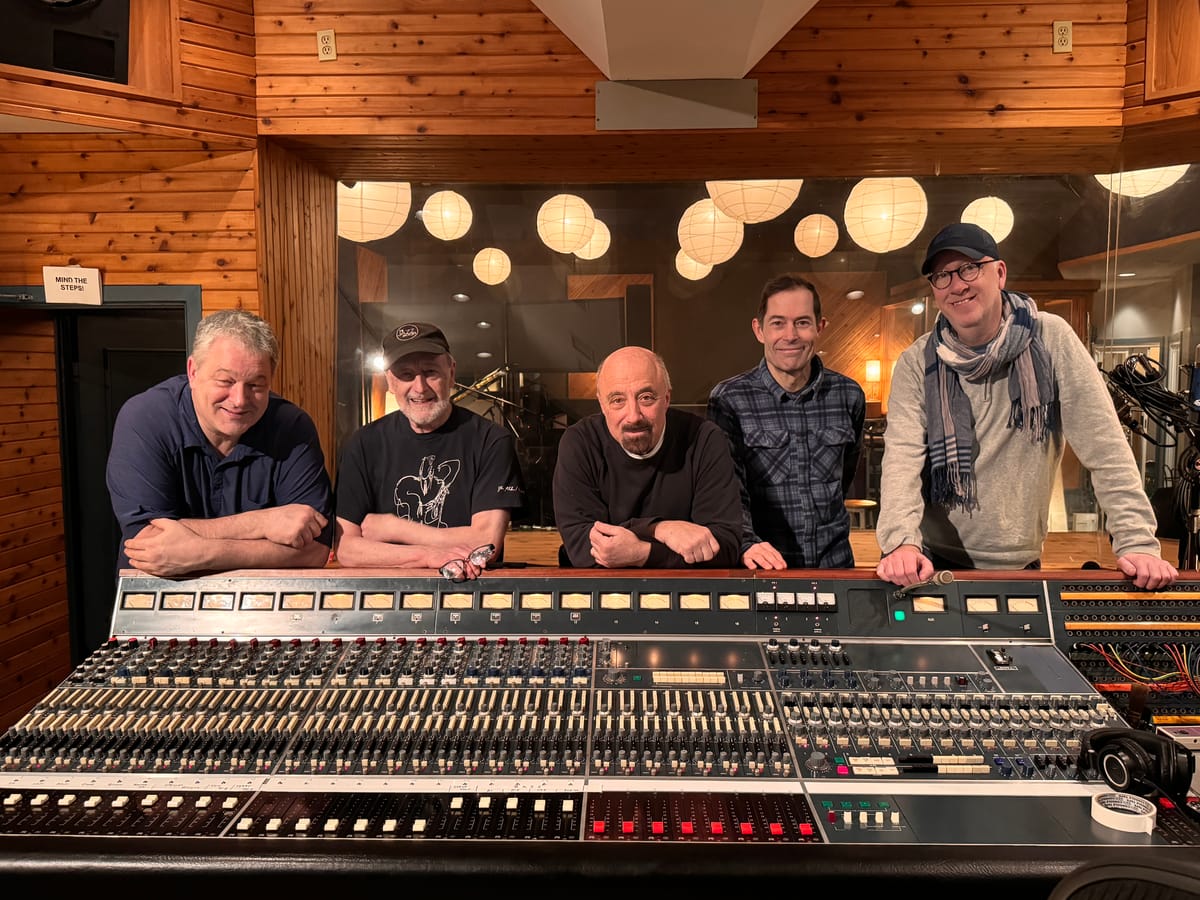
Ontario-based, Montreal-trained pianist Steve Holt, now in his early seventies, has a new album called Impact with a quintet of Toronto's finest: Kevin Turcotte on trumpet, Perry White on saxophone, Duncan Hopkins on bass, and Terry Clarke on drums. Holt was already a first-call player in his McGill youth, then built a financial career after moving to Toronto in the late 80s; he continued to release various albums each decade along the way.
I spoke with Holt on Good Friday, April 18, 2025 about the new album. He's since moved east of Toronto into the countryside. (Side note: one of his children, Leela Holt, is a Vancouver-based artist with a show at Guilt & Co. next month!)
Holt's straight-ahead tune-writing on Impact is fresh and brings the kind of impact the title promises. Opposite some new tunes, "The Unveiling", "The Lion's Eyes", and "The Inner Player" all come from Holt's first album The Lion's Eyes, which earned a Juno nomination at the 1984 awards.
The ballad "Tender Tears" is a Larry Coryell piece. (Here's Coryell's own recording of the tune.) "The Cup Bearers" is a hard bop composition by the late trombonist Tom McIntosh. John Kelman for All About Jazz described the tune as "arguably McIntosh's most well-known piece, having been recorded by artists including Dizzy Gillespie, Benny Golson, Blue Mitchell and Kenny Burrell". You can find the '60s Dizzy and the '90s Golson and Mitchell versions on streaming. Burrell's is on a live album, Midnight at the Village Vanguard, recorded in 1993. Unlike most or all of these versions, Holt and the band go straight in without any elaborate intro.
Our national anthem appears as a carefully-arranged, tender closing track on solo piano. Is it a coincidence or a statement to drop it on this album in the spring of 2025? We talk about that and more; please enjoy my conversation with Steve Holt below. I made some transcript editing for clarity.
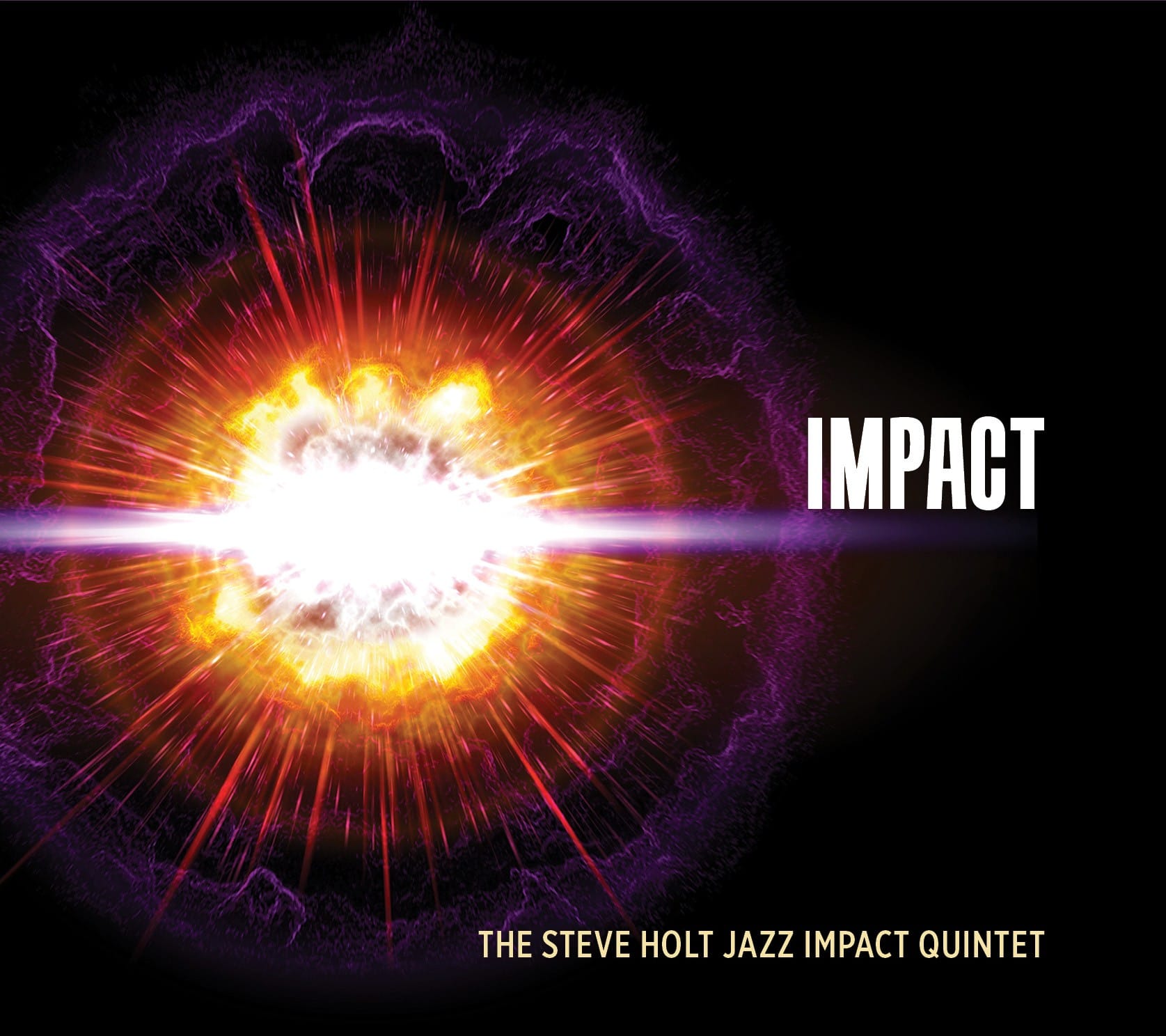
released April 25, 2025 | Buy (Bandcamp) | Available on streaming
WILL CHERNOFF: So Steve, thank you for joining me. I got a pre-release copy of the album for my listening pleasure digitally, on April 7th.
STEVE HOLT: Okay.
WC: And then when I watched videos from your Instagram, I learned that the session was only on March 6th, if I recall.
SH: That's right.
WC: I haven't been doing this very long, but that's the fastest turnaround I've ever seen of any album that has made its way to me. So I want to congratulate you--
SH: Well, thank you on that!
WC: But maybe just as a jumping off point from there, I just want to hear about how your day in the studio went with those awesome players. What did the studio feel like? How'd it go?
SH: Well first of all, I can tell you that we booked that session many months in advance, so I knew what was coming. And I guess I had a Christmas concert which was recorded for an album that'll come out this Christmas, like a separate album. That was the big project, and it was a trio gig in Prince Edward County. So once that was out of the way, by that time it was Christmastime. So basically since January 1st, it's been real, hard preparations for the record. Everybody had been booked already, like all the guys.
That's my band. That band has been together. We play not that often, but when I play, unless it's trio, that's the band. So it wasn't the first time we all played together. In fact, I played with those guys many times in that combination.
Then it was about finishing off the tunes. I had brand new compositions that I'd been working on, with the exception of the title track, “Impact”. The other new tunes had not been finished, not even close to being finished. There was a tradeoff between practicing, getting my chops ready and my brain ready to improvise, but also at the same time I have to like, okay, I'm gonna stop that, I'm gonna work on the tunes.
That brought me up to the session itself, where we were in there for two days, the whole band. There was a third session with just me. I recorded some solo piano: that was the “O Canada” thing at the end of the album [...] We mixed the following week and I had everybody, everything pretty much lined up: I had the CD manufacturer, I had the mastering engineer, the designer, everything had been pre-arranged.
But yeah, that's really fast. From that time, once it was recorded, it was like being on the track and, on your marks, let’s go, and you go flying down the track. It was a sprint to the finish line, but I needed to get it done because I had already booked the CD release date. You really wanna have CDs for a CD pre-release date, right? Which was at the Pilot on April 5th, so I knew I had to have CDs in my hand by April 5th. And we started recording on March 6th, so it was less than a month. And I had the CDs and yeah, I wouldn't necessarily recommend it [laughs]. It was exciting in a not-so-fabulous way, but you know, we got it done.
WC: Yeah, from the videos that I watched, you had rehearsal, then you had two gigs, then you had a studio session, then you had a while until this gig that you mentioned that you needed to have the CDs for.
SH: That's right.
WC: So you had the rehearsal, and you had multiple gigs, on the way in.
SH: We had one rehearsal at Perry White's house, and it wasn't a rehearsal in the normal way. You'd think, like we were all there, but he had a little clunky electric piano, like maybe for a child kind of thing, or for a composer [...] Terry was playing whatever drums he had there, and then the two horn players and the bass player... So, I mean, yeah, I guess it was a rehearsal. It wasn't ideal.
The two gigs we did, we did one night at the Jazz Bistro and one night at the Hirut Cafe that were back-to-back, and those were the two days before the first session in the studio. The reason for that was those were also rehearsals. We were pretty plain about that. The gig at the Bistro was a Tuesday night. The emcee there who books the place, he introduced it as, you know, this is new stuff, and they're working it out, and thanks for coming. It wasn't like we had any major trainwrecks or anything in the middle of it, but it was a rehearsal.
And then the Hirut Cafe the next night was essentially, we even stopped them. That was more of a rehearsal, like we actually told the audience, which was a smaller crowd, yeah, this is what we're doing. And they were like, oh, great, this is cool. We've never been to anything like this: it's like we're part of the preparation for an album. And it was very obvious; I think there was one where we actually said, let's do that again, in front of the audience. We did a at tune twice in a row, and that was cool.
WC: Interesting. Yeah. That's a perfect sequence to get into the studio. And like you said, you already know them, so the comfort level's there too. That's a great ramp-up when you're on a tight schedule, especially.
SH: Yeah, exactly.
WC: Yeah. So this is your first album as a leader in a long time, coming in and out of a non-music career. What was the decision like for you to say, okay, now's the time I'm gonna do this. Can you talk about the decision and when you made it, and what happened there?
SH: Well, okay, so the last real jazz record I made was farther back than that. It was 1993. it was a record for Sackville I did called Catwalk, and it had Kevin Turcotte and Daniel Barnes [on drums], and Mike Downes on bass. So that was a quartet, that was 30 years ago. The record I did in 2002 [The Dream] was kind of a diversion out of jazz into what I would call adult contemporary music. I wanted to take my jazz knowledge and bring it to a different genre. So I did that, that was the last album, and then there was nothing. And what happened was I got more into production. I had a studio, a pretty decent studio in my basement in Toronto. A complete studio, a control room, and a grand piano. It was like a real studio. And I did that sort of thing producing and engineering for a long time. I did some voiceovers. I was trying different things, but not jazz, really.
It was a few years, like I think until 2014 when I moved out here, that's when everything reconnected for me out in the country. So for ten-plus years I've been playing just jazz, pretty much. Out here and a bit in Toronto, but mostly like Prince Edward County Warkworth, which is where I had a little jazz club. Friday Night Jazz, you know, that sort of thing with good players. Like I had, you know, everybody come to play my little club in, in Warkworth [...] Dave Young played many gigs with me out there, and Kieran Overs, just lots of great players would come out and play this little club.
So I was playing quite a bit, and then the idea of a record came. It had been such a long time, and the other thing is like, I've just turned 71. Hey, you know, if you're not gonna do a record now, are you gonna do it in the old people's home? Like, you better get on it, right? [Laughs.] So there was an element of, the clock is ticking, dude. And like, you know, what are you waiting for? So let's get on with it. That was quite a bit of a factor. It's not like I have all the time in the world, you know. I'm still playing well, I'm still totally immersed in the music, so why not?
WC: Yeah, that makes sense. You already mentioned “O Canada” earlier. Maybe we could go there for a second. What do you want to say about the inclusion of of “O Canada”?
SH: Sure. Well, it's a funny thing now with what's going on in the US and all this anti-Canada [stuff] coming from the US. It's very topical to have a version of “O Canada" that I would interpret in a jazz format.
But it predates that, you know. It's a coincidence. I just thought, I wanna do that, and I'm gonna try some different harmonies and voicings, and see if it makes any sense or if it's just too weird. “O Canada” is a pretty straight tune. I started to work on it over a period of time, sitting down at the piano, looking at it harmonically, enriching it a little bit. And then I wrote it down just in terms of the core changes. I was doing different things on paper until I liked it, and I thought, oh, I'm probably gonna record that. It'll be a nice, different thing.
And then when all this political juice got injected into the thing, it became like, oh, this could be a powerful thing to have. And to me, that take that I use on the record is very emotional. I was almost in tears when I recorded it. It was very deep in my heart, and it made an impression on me as I played it. And of course it has a lot more meaning now with what's going on with our country.
WC: Did you play it on any of the gigs?
SH: No, I was going to play it on the CD release. It's a funny thing. I thought, I'm gonna start with that before the band even comes on, but I totally blanked out. The guys didn't even know I was doing it. I don't know if they knew until they got their own copy of the CD that “O Canada” was on there. I never mentioned it. I had the intention of recording it, but I didn't mention it to them, and they weren't there when I recorded. It was done on a separate day, and so I forgot. But I will definitely be playing it.
WC: You will play it on future gigs. Oh, interesting.
SH: Absolutely. I'll probably open with that, yeah, for sure.
WC: Well, when you do that, when you do it, are you going to leave it open to each person’s listening interpretation, or do you have anything that you would editorialize about what it means to you at the time?
SH: My intention at the moment is I'm simply gonna sit down and, you know, I'll introduce myself and the band or whatever; or before the band comes on, I'll say good evening, thank you for coming, and I'll start with that without a word. And I'll finish without anything and then see what happens.
WC: Oh, that's interesting. I'm curious to see what happens. Okay. We've referenced a few different decades here across all the ones that you have had. But now, we can go back even further, because I understand there's three pieces that come from The Lion's Eyes album, your first album. There's “The Unveiling”, there's “The Lion's Eyes”, and there's “The Inner Player”, right?
SH: That's right. Yeah.
WC: And those come from, it was your first album as a leader.
SH: That's right.
WC: And it was Juno-nominated, right?
SH: That's right. “The Lion's Eyes”, there's a story behind that, because of course on the record it was solo piano. And I think it was in 2015 – oh no, it would be before that – I went to Montreal, where I'm from, and where that album was recorded and all that stuff.
And I re-created that band as closely as possible. Michel Donato who was the bass player at the time, he's out of the picture now, he doesn't play anymore. So I got Alec Walkington. And Steve Hall, the tenor player, moved to New York. And Bob Mover, the alto player, he lives in New York. He doesn't come. I got the same drummer, Camil Belisle, and I got Charles Ellison, the trumpet player. I had Al McLean instead of Steve Hall. We played a gig at the Dièse Onze in Montreal, and it was fantastic. We played all those tunes just the way we played them.
But what was really a shocker in a positive way for me, was to hear “The Lion’s Eyes” with horns. I had never imagined it with horns: either I'm gonna play it solo, or I'm gonna play it trio. Well, we played it in rehearsal. It was like, wow, this is a totally different tune. It reminds me of almost like a Wayne Shorter tune. This is gorgeous. So ever since then, it was like, I'm gonna record this with horns.
WC: And you still played it solo up-front on the new version.
SH: Oh yeah. I always want to do that. In fact, in live situations, I do a lot more up-front soloing. A lot of times I say, okay guys, I'm gonna play something up-front and then we'll play the tune. But on the album it was like, okay, we're gonna be a little more organized.
WC: Yeah. I wanna talk about “The Cup Bearers” too, because that's kind of the repertoire piece that's on the new record.
WC: I looked around for some different versions of it, because I was curious about that, but I was wondering if you wanted to drop a version or a reference for that tune for you.
SH: I'm trying to remember when I first heard it. I studied with Kenny Barron, and I definitely heard Kenny playing on that. I played with James Moody, and definitely I remember the version that Moody did. So there were a lot of personal connections to it and I just love the tune. It's just a great straight-ahead tune with all these very surprising harmonic left turns. Terrific, beautiful, unexpected harmonic twists. And yet it doesn't sound academic and cerebral. It just sounds gorgeous. Like, this is how it should be. I played it a million times myself practicing on my piano. Normally on a live gig, I do an extended up-front solo version before the band comes in. I take it through a bunch of different iterations, almost like a gospel blues kind of thing but with the changes. It's a tune that I’ve played many, many times, and I've heard practically every version.
The first version I think I ever heard was the Tommy Flanagan Trio. He had a completely different take on it than the original, even with the melody and stuff. So I incorporated some of Tommy, on the melody, into the horn melodies. Go and listen to his version. [WC: I believe it's this take from Eclypso, recorded 1977 with George Mraz and Elvin Jones.]
There's some added, quite a bit of added melodic, I wouldn't even call them embellishments. They're just embedded into the melody, and none of the horn players ever used them. It's just been his thing. When you play trio, you'll hear other guys use that, but not with horns. So I had a completely new, fresh version of that tune with quintet harmonies and incorporating the piano stuff that Tommy did.
WC: Interesting. Yeah. I look forward to to checking that out.
SH: Yeah.
WC: Do you feel like talking about the inspiration behind any of the titles of the compositions?
SH: Sure.
WC: “Second Voyage”.
SH: “Second Voyage” started as a riff on the piano, and I played it over and over again just to get this feeling from this really simple riff. And it felt like a voyage. I felt like I could envision myself on a blue lake, slowly moving under the ocean, under a blue sky. I could just feel it and see it.
And then of course it had some resemblance, as I moved to the composition process, to Herbie Hancock’s “Maiden Voyage”. So I thought, perfect, I'm gonna call it “Second Voyage”. And I won't disguise the fact that I'm paying tribute to Herbie's tune, in fact there's a lick right at the end of the first ‘A’ that is directly out of his. It's rhythmic, nothing else, but you know, it's that tune.
Herbie Hancock to me is one of my biggest influences. I love everything he does mostly. I was really excited to finish that up and see it as a tribute, but also the idea that it's a voyage, that you're out on the sea moving slowly.
WC: Cool. Yeah. Is there anything else that you feel like is behind this album that you wanted to share at this point? Because you already mentioned so much cool stuff, but I'm just curious if there was something else I didn't get to.
SH: Well, playing with these musicians: we didn't really talk about that. So Kevin and I go back a long, long way. When I first moved to Toronto in ‘87, I met Kevin, he was just a young whippersnapper. We did quite a few gigs together in those days, but then I didn't see him for a while when I was off the scene.
Terry Clarke, I mean, everybody knows Terry. I had played a lot with Jerry Fuller, when he was alive in the 80s, and Terry was my go-to drummer. When I hooked up with Terry, to me that was like magic, so I always keep going with that.
Duncan Hopkins was a newer acquaintance that I made. I'm not sure how, because I was always using Kieran Overs. Kieran doesn't play much anymore. Then there was Dave Young, and he actually had some health issues and he was stopping for a while, so I needed a new bass player. Duncan is a fabulous player. He also doesn't live as far, so I could invite him out to play gigs with me out here. He lives in Oshawa, and I'm in Northumberland County, so it's on the way to my house. So we played a lot of gigs together.
And then Perry [White] was probably the last addition. I had the quintet originally with Kirk McDonald, and Kirk got had some health issues. I had a bunch of gigs, and he said, I'm really sorry but I'm gonna have to pass on those gigs. I needed to keep going. So I can't remember why I chose Perry, but boy, I'm really glad I chose Perry, because he adds a whole different sound and dimension. He's such a unique player. So is Kirk, of course. They're both great. Perry, he just fits right in, takes those tunes and eats 'em up like they all do, you know?
It was like the perfect storm for that session. They were all available, we've all played together. I brought them the tunes. You know, a lot of the album has to do with with everything but me, you know, the great musicians bringing their talent. We ran down a few takes: not many, I must say. And one of them was a first take, and that was the Coryell tune, which is another story I should share before we go.
I'll just give you a quick rundown of the Coryell tune, because it's important. Larry Coryell and I played together in the 70s in Montreal, and it was a great, great gig. I had a lot of fun. It was great, and it was somewhat intimidating because it's like, Larry Coryell, oh my God, what am I gonna do? In those days in Montreal, a lot of times I got the first call for when they brought in the so-called big names. That's how I played with Moody. Coryell was a little different, because at that time he was playing a lot of fusion, and I had moved on from my fusion phase. I wasn't really interested in playing fusion at that time. When I got to the gig, he had a rehearsal in the afternoon. It was all straight-ahead stuff. It was like, oh, this is gonna be great, which it was. There were two tunes that he pulled out. They were brand-new, and one of them was “Tender Tears”. Brand-new tune: he hadn't recorded it yet. He gave us the charts, we played it, and it was great.
Six months ago now, I'm rummaging through a file cabinet. and I find his tune “Tender Tears” written on a piece of paper with his handwriting. It's like, wow, there's Larry's handwriting! And of course he's gone now, right? He passed away a few years ago. [WC: in 2017.]
It’s a beautiful composition. I feel a sort of a heartfelt connection to Larry. I’m actually in touch with his widow. I needed to find a publishing company to pay the mechanical rights to. She said,sent it over to this guy, we got talking... I sent her a copy of the record. It’s a beautiful connection.
I'm sure I have stuff like that from Moody. I just don't know where it is. I’ve got tons of files and filing cabinet from old gigs and stuff. You know, those were fun days. That was right in the height of it. A lot of these guys were still alive, like Moody was still alive. I think we did four or five nights with Moody, and you know, he he was amazing. You know, he was James Moody, at his best. Very exciting. So much uptempo stuff, just counting it in and you basically couldn't even snap your fingers that fast.
WC: Maybe you'll find one of his charts for the next record.
SH: Yeah! That's always a possibility.
WC: Thank you, Steve, for your time!
SH: Thank you.
